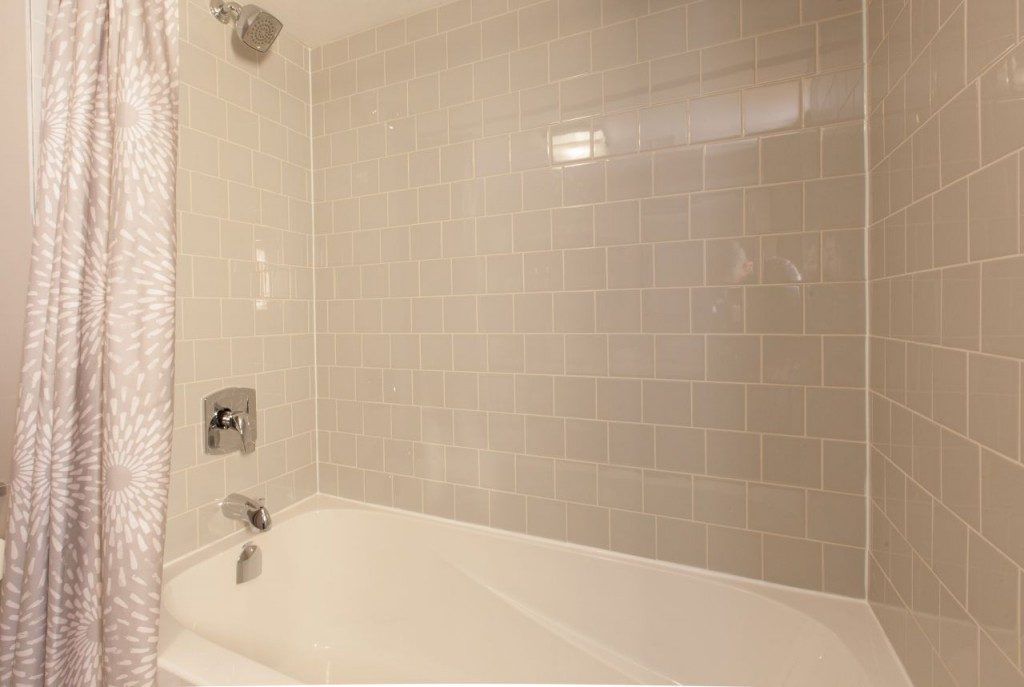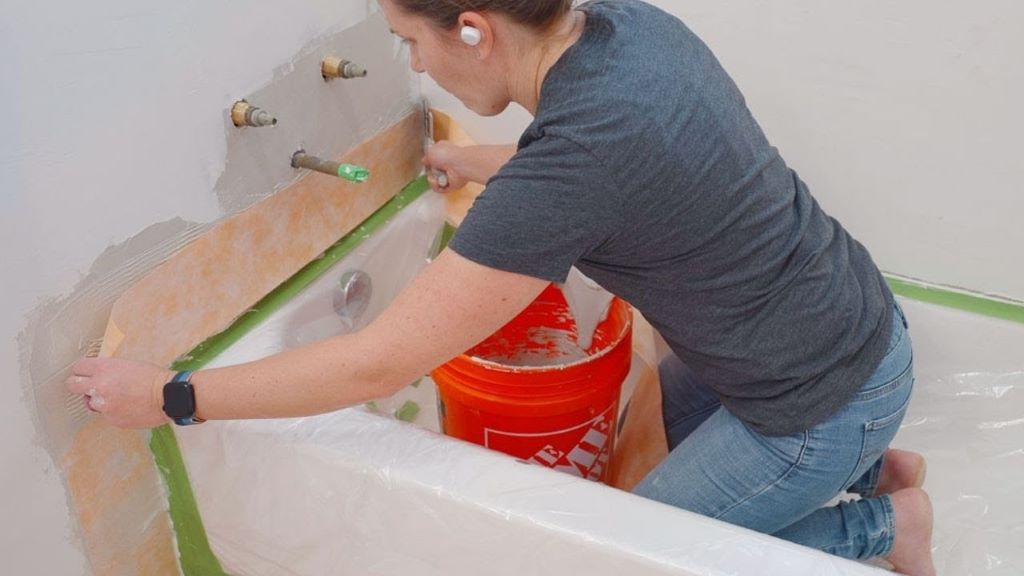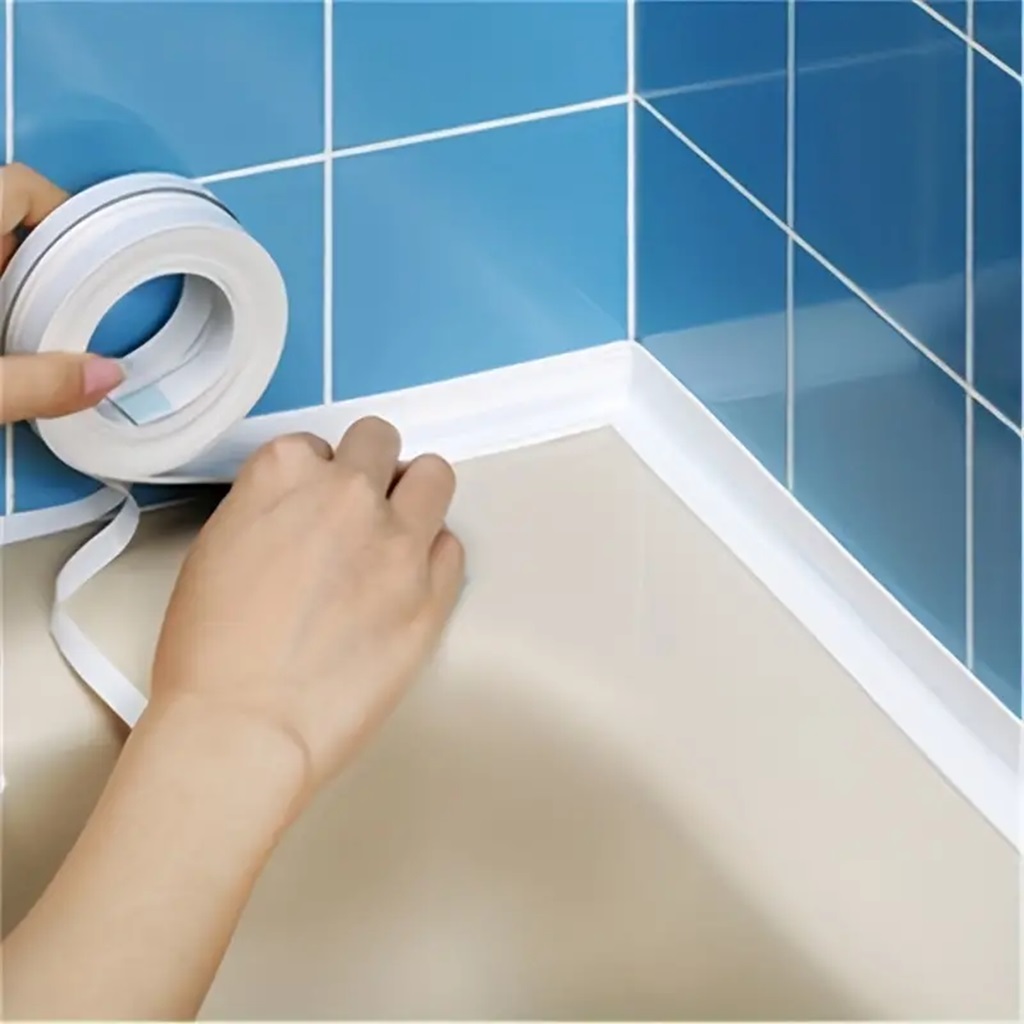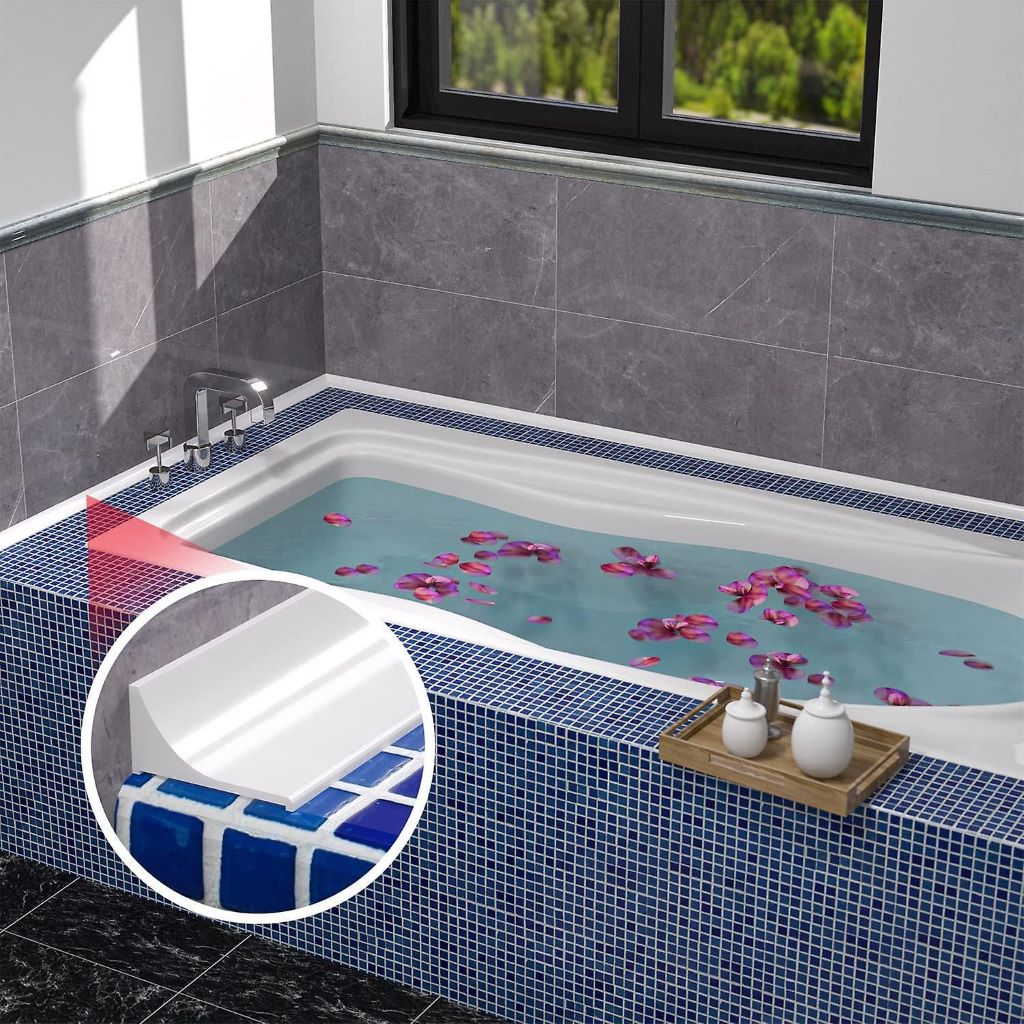
13 Jan How Do You Waterproof a Bathtub?
Taking a luxurious soak in the tub can be one of life’s simple pleasures. But over time, cracks, leaks, and moisture damage can ruin your bathing experience. Protecting your tub with a waterproof coating is an easy DIY project that will keep your bathtub in top shape for years to come. In this guide, I’ll walk you through everything you need to know to waterproof a bathtub and keep water where it belongs—inside the tub!
Why Waterproof Your Bathtub?

Waterproofing your tub serves a few key purposes:
- Prevents leaks – Cracks and chips in the enamel finish can allow water to seep into the porous material underneath, resulting in leaks and water damage. A protective coating seals these flaws.
- Stops moisture damage – Constant moisture from baths and showers can cause swelling, peeling, cracking, and discoloration over time. Waterproofing blocks moisture absorption.
- Adds slip resistance – Some waterproofing coatings have gritty textures that help prevent slips and falls in the tub.
- Extends the life – By protecting against water damage and deterioration, a waterproof coating can add years of life to your existing tub.
- Improves appearance – Rejuvenates a worn, dingy bathtub with a fresh new finish.
Whether you want to stop a stubborn leak, improve traction, refresh the look of an outdated tub, or extend its usable lifespan, waterproofing can help. If you’re specifically dealing with a Moen bathtub faucet repair, addressing the issue promptly is crucial to maintaining the overall functionality and aesthetic appeal of your bathroom.
What Type of Bathtub Do You Have?
The first step is identifying what material your bathtub is made of. Popular options include:
Fiberglass
Molded from glass-reinforced plastic resin, fiberglass tubs are affordable, lightweight, and easy to clean. But the surface is prone to scratching and dulling over time.
Acrylic
Similar to fiberglass but with a thicker layer of acrylic plastic resin, acrylic tubs resist scratches better but can still become dull or faded.
Porcelain Enamel Steel
This type has a porcelain enamel coating baked onto a steel tub shell. The porcelain may chip or form hairline cracks allowing moisture intrusion.
Cast Iron
Cast iron tubs are extremely durable but very heavy. The enameled surface can chip and peel after years of use.
Cultured Marble
Chip-resistant cultured marble consists of marble dust and resins formed into a tub shell. The surface is prone to dulling and stains over time.
Knowing your tub material will determine the best waterproofing method. Next, inspect your tub closely to identify areas needing repair.
Inspect and Repair Any Existing Damage
Before waterproofing, take time to evaluate and fix any problem areas:
- Chips/cracks – Mark any chips, cracks, or voids in the surface that allow water intrusion. Fill fiberglass chips with epoxy resin filler. Use porcelain chip repair kits for porcelain enamel tubs.
- Leaky faucets/spouts – Tighten or replace any leaky faucets or spouts that drip water onto the tub surface.
- Worn caulking – Recaulk around the tub where it meets walls, tile, or fixtures if the caulking is dried, cracked, or missing.
- Surface stains/damage – Try a tub surface cleaner to remove any stubborn stains, dull areas, or discoloration.
Properly prepping and repairing any damaged areas ensures the waterproofing coating bonds well and performs optimally.

Choose the Best Waterproofing Method
There are three main options for waterproofing a bathtub:
Epoxy Resin Coating
Two-part epoxy resin coatings provide a super-durable and protective finish. Epoxy resists moisture, chemicals, impacts, and heat while adding glossy shine. The thick viscosity coats vertical surfaces well. Ideal for fiberglass, acrylic, porcelain, and cultured marble tubs.
Pros:
- Extremely durable and long-lasting
- Resists moisture, scratches, chemicals
- High gloss finish
- Can be tinted
Cons:
- Long cure time (up to 72 hours)
- Strong fumes during application
- Surface needs to be sanded for adhesion
- Expensive
Polyurethane Coating
Polyurethane is a single-component coating that dries faster than epoxy. It resists moisture, scratches, chemicals, and adds glossy shine. The thin viscosity can result in drips on vertical surfaces. Good for fiberglass and acrylic tubs.
Pros:
- Durable moisture protection
- Enhances gloss
- Resists chemicals and scratches
- Faster drying time
Cons:
- Not as thick or durable as epoxy
- Potential brush/roller marks in finish
- Strong odor during application
Textured Acrylic/Latex Paint
For a simple DIY tub coating, textured tub and tile paint adds a slip-resistant finish. Acrylic or latex formulations resist moisture and rejuvenate dull surfaces. Multiple coats may be needed. Ideal for fiberglass, acrylic, porcelain, and cultured marble.
Pros:
- Affordable DIY option
- Textured finish improves traction
- Easy soap and water clean-up
Cons:
- Not as durable as other options
- Needs multiple coats
- Can scratch or scuff over time
Consider the pros, cons, and cost to pick the best waterproofing method for your needs.
Prepare Your Tub for Coating
Proper prep work before applying any coating ensures it bonds tightly:
Clean
Use a tub surface cleaner or scrubby pad with abrasive cleanser to thoroughly clean. Rinse well. Let dry completely.
Sand
Lightly sand the surface with 220 grit sandpaper to rough up glossy surfaces for better adhesion. Rinse and let dry.
Mask
Mask off any nearby walls, fixtures, drain, overflow plates etc. with painter’s tape and plastic sheeting to prevent splatters.
Ventilate
Open windows and use fans to circulate air and ventilate fumes from coatings.
Protect floors
Cover bathroom floors with a plastic drop cloth to protect from spills and drips.
Prepping your tub takes a bit of work but it’s crucial for proper waterproofing results.
Apply Epoxy Resin Coating
For a super durable epoxy finish:
- Mix resin/hardener – Mix 2-part epoxy in precise ratios per manufacturer instructions.
- Apply thin first coat – Use a disposable chip brush or small foam roller to apply a very thin, uniform first coat. Spread evenly and let cure 8-12 hours.
- Sand lightly – Use 220 grit sandpaper to lightly sand and rough up the first coat. Rinse and let dry.
- Apply two heavier topcoats – Mix more epoxy and apply two more heavy coats using short overlapping strokes to build up thickness. Let cure 72 hours.
- Remove masking/clean – After full cure, remove all masking and plastic sheeting. Clean epoxy drips with a plastic scraper and mineral spirits.
Epoxy creates an incredibly hard, glossy and durable finish that will last for many years.
Applying Polyurethane Coating
For a faster polyurethane finish:
- Stir well – Stir or shake polyurethane thoroughly before using.
- Apply thin coats – Use a small foam roller, brushing evenly with light strokes. Apply 2-3 thin coats a few hours apart.
- Remove drips – Carefully smooth out any drips or sags from vertical surfaces with a foam brush before drying.
- Let cure – Let cure 24 hours between coats and 48 hours after final coat.
- Unmask tub – Remove painter’s tape, plastic, and cloths. Clean any spilled coating with mineral spirits.
Polyurethane coats faster than epoxy but may need more coats for even coverage.
Paint On a Textured Acrylic/Latex Coating

For a simple acrylic paint finish:
- Stir paint well – Stir textured tub paint thoroughly before and during application.
- Apply two coats – Using a small paint roller, apply two coats a few hours apart. Add additional coats for more texture.
- Let dry – Let dry 4-6 hours between coats and 24 hours after final coat before use.
- Remove masking – Carefully remove all masking materials. Clean any paint drips immediately with soap and water.
Textured paint finishes much faster than other options though it may need touch-ups over time.
Get the Most from Your Tub Waterproofing
To make your tub coating last longer:
- Let cure fully before use – Don’t fill tub until coating has cured completely.
- Handle gently – Avoid abrasive scouring pads or cleansers that could scratch surface.
- Use bath mats – Place rubber bath mats on tub floor for cushion and slip resistance.
- Avoid harsh chemicals – Prevent damage from hair dye, nail polish remover, drain cleaners etc.
- Clean weekly – Use mild soap and water to clean tub weekly and prevent buildup.
- Re-caulk when needed – Watch for shrinking or cracked caulk and re-apply fresh caulk when necessary.
- Touch up as needed – Spot repair any chips or damaged areas to prevent moisture intrusion.
With the proper prep and application, a waterproof coating can extend the life of your bathtub for years before replacement is needed. Just take steps to gently care for your tub. Now relax and enjoy the benefits of a freshly waterproofed tub!
Frequently Asked Questions
Q: How long does a bathtub waterproofing coating last?
A: With proper care and maintenance, an epoxy or polyurethane coating should last 3-5 years before needing to be reapplied. DIY acrylic paint may need more frequent touch-ups.
Q: Can I waterproof a cast iron bathtub?
A: Yes, epoxy coatings are an excellent way to waterproof and restore old cast iron tubs. The enameled surface needs to be sanded and cleaned well for epoxy to adhere.
Q: What’s the best way to remove old bathtub caulk?
A: Slice through old caulk with a utility knife. Then use a caulk scraping tool to lift out old caulk. Clean the area fully before re-caulking.
Q: How do I stop my bathtub from getting slippery?
A: Re-glazing with a textured acrylic coating provides added grip. You can also apply anti-slip tub stickers or invest in a rubber bath mat.
Q: Can I use the same coating on a fiberglass shower?
A: Yes, epoxy resin or textured acrylic paints that work on fiberglass and acrylic tubs can also be used in fiberglass or acrylic showers. Always clean and prepare the surface properly before applying.
Conclusion
Waterproofing your bathtub is a great way to stop leaks, prevent damage, improve safety, and restore the look of a worn tub. With proper preparation and application of an epoxy, polyurethane, or textured acrylic coating, you can extend the life of your existing tub for years. Just be sure to clean and care for your tub gently after waterproofing. Curious about the cost to convert a bathtub to a shower? Explore the option of a professional-grade tub coating for a renewed look and water-tight protection, offering an affordable and efficient alternative to full tub replacement. Elevate your bath time comfort by upgrading your bathroom with proper waterproofing and enjoy the benefits without breaking the bank.”

Sorry, the comment form is closed at this time.